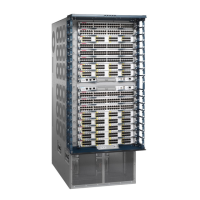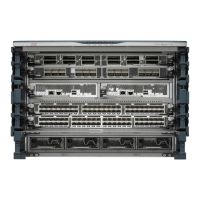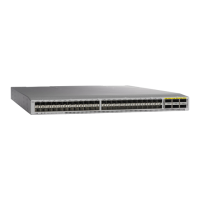Send document comments to nexus7k-docfeedback@cisco.com.
10-12
Cisco Nexus 7000 Series NX-OS Unicast Routing Configuration Guide, Release 4.x
OL-20002-02
Chapter 10 Configuring Basic BGP
Configuring Basic BGP
Ensure that you are in the correct VDC (or use the switchto vdc command).
SUMMARY STEPS
1. config t
2. router bgp autonomous-system-number
3. router-id ip-address
4. address-family {ipv4 | ipv6} {unicast | multicast}
5. network ip-prefix [route-map map-name]
6. show bgp all
7. copy running-config startup-config
DETAILED STEPS
Command Purpose
Step 1
config t
Example:
switch# config t
switch(config)#
Enters configuration mode.
Step 2
router bgp autonomous-system-number
Example:
switch(config)# router bgp 64496
switch(config-router)#
Enables BGP and assigns the AS number to the local
BGP speaker. The AS number can be a 16-bit integer
or a 32-bit integer in the form of a higher 16-bit
decimal number and a lower 16-bit decimal numbe in
xx.xx format.
Step 3
router-id ip-address
Example:
switch(config-router)# router-id
192.0.2.255
(Optional) Configures the BGP router ID. This IP
address identifies this BGP speaker.
Step 4
address-family {ipv4 | ipv6}{unicast |
multicast}
Example:
switch(config-router)# address-family
ipv4 unicast
switch(config-router-af)#
(Optional) Enters global address family configuration
mode for the IPv4 address family.
Step 5
network ip-prefix [route-map map-name]
Example:
switch(config-router-af)# network
192.0.2.0
(Optional) Specifies a network as local to this
autonomous system and adds it to the BGP routing
table.
For exterior protocols, the network command controls
which networks are advertised. Interior protocols use
the network command to determine where to send
updates.

